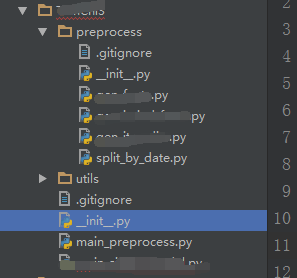详解C++编程中一元运算符的重载
可重载的一元运算符如下:
- !(逻辑“非”)
- &(取址)
- ~(二进制反码)
- *(取消指针引用)
- +(一元加)
- -(一元求反)
- ++(递增)
- --(递减)
- 转换运算符
后缀递增和递减运算符(++ 和 ––)在递增和递减中单独处理,下面会讲到。
以下规则适用于所有其他一元运算符。若要将一元运算符函数声明为非静态成员,则必须用以下形式声明它:
ret-type operator op ()
其中 ret-type 是返回类型,op 是上表中列出的运算符之一。
若要将一元运算符函数声明为全局函数,则必须用以下形式声明它:
ret-type operator op (arg )
其中 ret-type 和 op 如上所述用于成员运算符函数,arg 是要参与运算的类类型的参数。
注意
一元运算符的返回类型没有限制。例如,逻辑“非”(!) 返回整数值是合理的,但并非强制性的。
递增和递减运算符重载
由于递增和递减运算符各有两个变量,因此它们属于一个特殊类别:
- 前置递增和后置递增
- 前置递减和后置递减
编写重载的运算符函数时,为这些运算符的前缀和后缀版本实现单独的版本很有用。若要区分这两者,请遵循以下规则:运算符的前缀形式与声明任何其他一元运算符的方式完全相同;后缀形式接受 int 类型的其他参数。
注意
当为递增或递减运算符的前缀形式指定重载运算符时,其他参数的类型必须是 int;指定任何其他类型都将产生错误。
以下示例显示如何为 Point 类定义前缀和后缀递增和递减运算符:
// increment_and_decrement1.cpp
class Point
{
public:
// Declare prefix and postfix increment operators.
Point& operator++(); // Prefix increment operator.
Point operator++(int); // Postfix increment operator.
// Declare prefix and postfix decrement operators.
Point& operator--(); // Prefix decrement operator.
Point operator--(int); // Postfix decrement operator.
// Define default constructor.
Point() { _x = _y = 0; }
// Define accessor functions.
int x() { return _x; }
int y() { return _y; }
private:
int _x, _y;
};
// Define prefix increment operator.
Point& Point::operator++()
{
_x++;
_y++;
return *this;
}
// Define postfix increment operator.
Point Point::operator++(int)
{
Point temp = *this;
++*this;
return temp;
}
// Define prefix decrement operator.
Point& Point::operator--()
{
_x--;
_y--;
return *this;
}
// Define postfix decrement operator.
Point Point::operator--(int)
{
Point temp = *this;
--*this;
return temp;
}
int main()
{
}
可使用以下函数头在文件范围中(全局)定义同一运算符:
friend Point& operator++( Point& ) // Prefix increment friend Point& operator++( Point&, int ) // Postfix increment friend Point& operator--( Point& ) // Prefix decrement friend Point& operator--( Point&, int ) // Postfix decrement
表示递增或递减运算符的后缀形式的 int 类型的参数不常用于传递参数。它通常包含值 0。但是,可按以下方式使用它:
// increment_and_decrement2.cpp
class Int
{
public:
Int &operator++( int n );
private:
int _i;
};
Int& Int::operator++( int n )
{
if( n != 0 ) // Handle case where an argument is passed.
_i += n;
else
_i++; // Handle case where no argument is passed.
return *this;
}
int main()
{
Int i;
i.operator++( 25 ); // Increment by 25.
}
除显式调用之外,没有针对使用递增或递减运算符来传递这些值的语法,如前面的代码所示。实现此功能的更直接的方法是重载加法/赋值运算符 (+=)。
